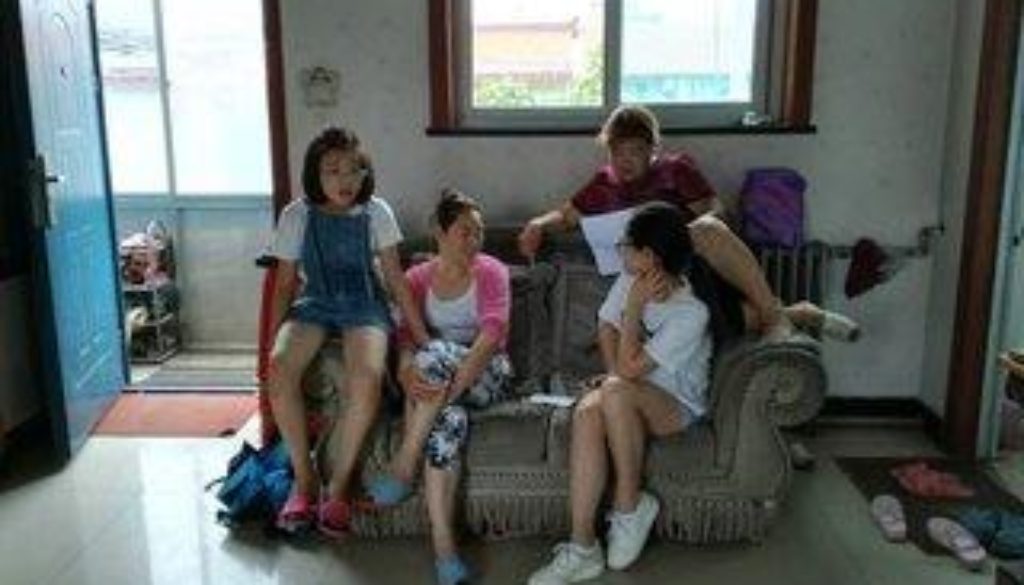Gender analysis of family care for the elderly: evidence from Beijing, China
This blog discusses differences in receiving family care among the elderly in China.
Dr Hao Xiaoning and Liu Tianyang, China National Health Development Research Center
Care giving within households is the foundation of health systems, especially for the elderly population in China where 98.1% of the elderly rely on daily care provided by family members, and only 1.9% rely on care from professionals and society welfare institutions. Because of the lack of well functioning long-term care programs, as well as the historical filial piety tradition, (the belief that adult children have the responsibility to support their parents), Chinese elderly prefer to rely on family members in their last years of life.
Caregivers and care receivers are the two major components of the Chinese family care system. Caregivers include: mates, sons, daughters, sons in law, and daughters in law. There are many papers discussing the gender difference of caregivers for the elderly in China. Kadoya and Yin’s study, for example, indicated that compared with daughters, sons (and their wives) were more likely to be primary caregivers for parents, consistent with historical tradition. Other studies have shown that daughters played a more important role in caring for parents. There are few studies, however, which analyze the gender difference in the care received by the elderly.
This study aimed to explore differences in receiving family care among the elderly, and to examine the risk factors affecting care received. The study was divided into two parts: the first part was a quantitative analysis of survey data, which aimed to explore gender difference in receiving family care among the elderly, and to examine the risk factors affecting care received. The second part consisted of qualitative semi-structured interviews within several households, which aimed to explore the opinions of elders and their children regarding family informal care within households. The findings help to provide a picture of the elderly family care situation and contribute to improving policy and public attention on gender equity within households in taking care of the elderly.
Care received by the elderly
The quantitative study was a cross-sectional study extracted from the results of the Health and Social Support of Elderly Project, which was conducted in three districts in Beijing in 2013. A group of 924 elders were included in the study. The data gathered were stored and analyzed using SPSS 19. A Mann-Whitney U test was conducted comparing mean hours of care received by elderly by gender. Descriptive analysis was also conducted for subgroups who did not receive any care in the last week. Binary logistic regression was used to examine the relationship between care received by elderly and different variables, including gender.
The results showed that elders received an average of 16.49 hours of care in the preceding week; men received an average of 15.57 hours, while women received an average of 17.39 hours. On average females received two more caring hours from children compared to males. 26.8% of the elderly did not receive any care from their children in the last week. There was no significant difference in the hours of care elderly received between male and female (p>0.1). The logistic regression showed that gender was not a significant determinant of the proportion of elders who received six hours or more of care in the preceding week; however, age, monthly income, and health status significantly affected the care received by the elderly.
For the qualitative component, 18 households (including elders and one of their children) were interviewed regarding family informal care. Nine households were from urban areas (Haidian District) and nine were from rural areas (Miyun district). Only households with elderly parents more than 60 years old were included. A customized semi-structured interview guide for elderly parents and their adult children was developed. For parents, the questions included “Do you think you received less care from children than your mate?” and “Among the children, who give you the most care? And what’s the reason for it”, etc. For the adult children, the questions included “Do you think you make more effort in taking care of parents than your siblings? And what’s the reason for it?” etc.
Results showed that a traditional supporting system was still mainstream in rural areas, however, there was a transition underway in urban areas. All of the nine rural elders interviewed were cohabiting with their children while only one of the nine urban elders was cohabiting with children. In rural areas, the traditional norm of “bring up sons to support parents in their old age” was still well accepted; sons and daughters-in-law were still the core force in supporting parents. On the contrary, in urban areas, eight out of nine elders thought that daughters were more reliable than sons, and daughters provided more hours of care compared to sons and daughters-in-law.
Factors affecting care received
Factors affecting the family care received by the elderly included: age, income, education, health status, and number of children.
- Age played a role in whether or not care was received. People aged 70-79 years received the most care. Those who were younger (60-69 years) often did not receive any care from their children in the preceding week.
- Among the elderly who received care, men had 4000 Yuan or more monthly income, while women had less than 1999 Yuan monthly income. Overall, elderly people with a monthly income of more than 4000 Yuan were less likely to receive care from their children. This may be due to the fact that richer elderly parents have more freedom in choosing care from the outside, rather than relying on the help and assistance of their children.
- Elderly men who received care had a higher percentage of secondary and tertiary education, while most of the women who received care were illiterate and had only primary education.
- Health status was significantly associated with the care received by elderly. Compared with healthy elders, those living with chronic disease were more likely to get more than six hours of care from their children in the preceding week. Those who were healthier were less likely to receive care.
- Elderly people who only had one child received the most care in the preceding week, while those with two or more children were less likely to receive care.
- Despite the fact that elderly women had more care-related needs and fewer resources, there was no significant difference between men and women in the care received.
Conclusion
In conclusion, male and female elders did not differ in the care received from their family in urban areas in Beijing, and gender was not found to be a risk factor affecting the hours of family care received by the elderly. Factors affecting care received included age, income, education, health status, and number of children. Traditional filial piety was under transition, and a large amount of the elders could not get family care from their children.
Unpaid elderly care is an important part of the health system and better understanding who provides and receives care is important in terms of identifying weaknesses and gaps in provision and responding with social policy. Due to the transition away from a traditional filial piety system, social welfare systems, such as long-term care insurance and professional care institutions in China should be strengthened so that the elderly could receive the care they need.
Photo caption: Interview being conducted in rural area, 2016

